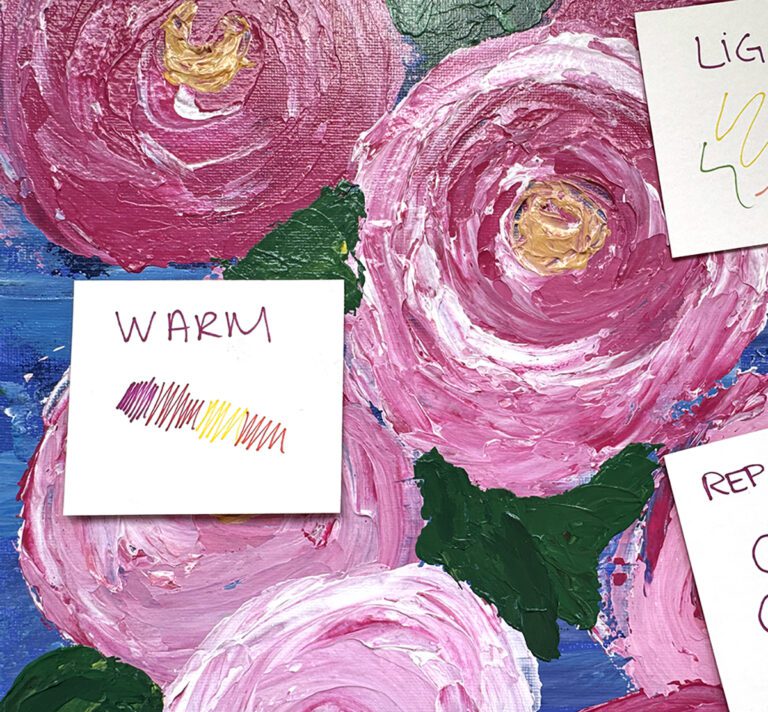As teachers, we are continually improving our practice, and we all have different strengths. However, I know many art teachers struggle to create accommodations for their special needs students.
Creating accommodations may not have been covered well in our college prep courses. In addition, it’s easy to fall victim to the rookie mistake of letting the student’s paraprofessional do most of the work. However, after 11 years of struggling with this very topic, I’ve finally had an epiphany about teaching my students with special needs: the accommodations I make for these students can actually benefit my whole classroom.
The trick to making meaningful accommodations is that they need to truly be student-centered and reflect the student’s learning, NOT how much students can accomplish with a paraprofessional at their side.
One way my colleagues and I have gotten to the heart of this idea is to truly think about each students’ capabilities. To do this, we sat down and estimated where each of our students with special needs were in regards to cognitive and fine motor skills.
For example, one of my 14-year-old students may only have the fine motor skill set of a 6-year-old. Obviously, this has huge implications in the art room. Of course, this is not a complete and thorough analysis, but it is a jumping off point for creating accommodations.
This new approach to a summarized student’s abilities was such a simple thing, and it helped my accommodations click like they never had before. This new approach has given me previously unknown successes.
Today I’m happy to share some concrete ideas on how to not only create better accommodations but how better accommodations actually benefit all students.

3 Tips For Better Accommodations
1. Don’t be afraid to change project requirements.
Sometimes students with special needs need a small change to be successful. For a student without much stamina, maybe you require 2 quality prints instead of 6. For a student that struggles with fine motor skills, perhaps you provide a larger piece of paper. There are ways to keep the same learning objectives while making the journey more accessible.
2. Change the media.
Along with changing requirements, take a look at the project materials. Foam blocks are easier to carve into than linoleum, but both make great prints. Model Magic can provide 3D experience for students that don’t have the hand strength to work with traditional clay. If the spirit of the project stays the same and the end learning stays the same, go ahead and swap to a more user-friendly media.

3. Make it applicable and relevant
Make sure your hook and subject matter are relevant to your students with special needs. All artists look to make meaning with and through their work, but tackling a heady content area might not be right for all students. For some, having art class be purely processed-based is the way to go: spraying watercolor here, smearing acrylic paint here, dragging a tool though this material a certain way.
By making a few simple changes, you can make all of your students feel comfortable, confident, and engaged in your classroom.

How Better Accommodations Benefit All
1. Making accommodations forces us to think about what’s really important.
When teachers think about simplifying a project’s criteria, changing the media, and making the conceptual hook more student-friendly, they are asking, “What’s really important here? Could students demonstrate the learning objective a different way?” When teachers are willing and able to step back and look at student learning this way, more creative outcomes open up for all students.
2. All students can find success through repetition and process.
Think about it. Do we often really let students take the time to experiment with materials before diving into a project? Process-based activities can benefit ALL students. For example, if students are asked to make eight different overlapped texture rubbings, chances are some of them are going to be pretty great. Allowing all your students time to explore different processes will make everyone’s work better.
3. All students benefit from having a reflective teacher.
The whole idea of success and benefits has now come full circle. A teacher is required to meet the needs of all students, from those with special needs to those identified as “talented and gifted.” However, our students are more than the labels our schools ascribe them! All students, not just those we think of as having special needs (and what student doesn’t have special needs?!) deserve reflective teachers who can modify both their curriculum and pedagogy. When teachers master accommodations for one student, they’ve learned how to benefit all students!
What successes have you had in accommodating your curriculum to the diverse needs of all your students?
Did you find that your accommodations actually benefit all students? How so?
Magazine articles and podcasts are opinions of professional education contributors and do not necessarily represent the position of the Art of Education University (AOEU) or its academic offerings. Contributors use terms in the way they are most often talked about in the scope of their educational experiences.





